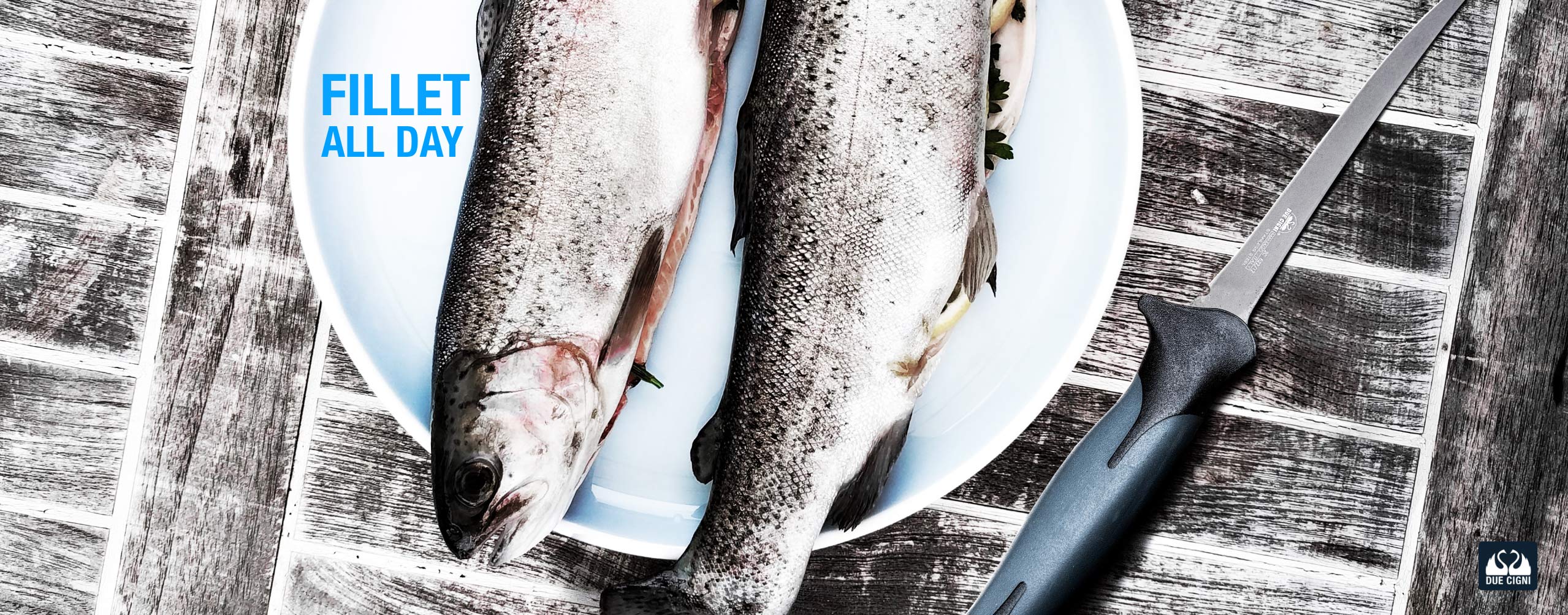
Best Fillet Fishing Knives
What knife is best for filleting fish?
The best knife for filleting fish is a fillet knife. These knives feature thin, flexible blades that easily glide along the fish's bones and contours, making clean and precise cuts. Look for a high-quality stainless steel fillet knife for efficient fish filleting in the kitchen.
Click To Read All FAQS
How do I choose a fish fillet knife?
When choosing a fish fillet knife, consider its blade flexibility, length, and sharpness. Opt for a flexible blade to follow the fish's contours. A length of 6-9 inches is ideal for most filleting tasks. Choose a knife with high-quality stainless steel and a comfortable handle for control and safety.
Do you need a special knife to fillet fish?
Yes, a special knife known as a fillet knife is recommended for filleting fish. Fillet knives have a thin, flexible blade designed to efficiently remove the skin and bones while minimizing waste. Their unique design makes them essential for achieving clean and precise fillets when preparing fish.
Do you need a sharp knife to fillet a fish?
Yes, a sharp knife is essential for filleting fish. A sharp fillet knife ensures clean and precise cuts, making the filleting process easier and reducing the risk of accidents. Dull knives can tear the fish and make the task more challenging and less safe.
What is the best material for a fillet knife?
The best material for a fillet knife blade is high-carbon stainless steel. This material combines durability and corrosion resistance with excellent sharpness and edge retention. It ensures that the knife can efficiently fillet fish while maintaining its performance over time with proper maintenance.
Can you use a serrated knife to fillet a fish?
While serrated knives are not ideal for filleting fish, they can be used for certain tasks like cutting through scales or bones. However, a specialized fillet knife with a thin, flexible blade is the best choice for achieving clean and precise fish fillets, as it minimizes waste and offers better control.
What's the difference between a boning knife and a fillet knife?
Boning knives and fillet knives serve different purposes. A boning knife has a rigid blade for removing bones from meat and poultry. In contrast, a fillet knife has a thin, flexible blade designed for precise fish filleting, minimizing waste. The choice depends on the type of food and task at hand.
Is a straight or curved fillet knife better?
The choice between a straight or curved fillet knife depends on personal preference and the specific task. A curved fillet knife is versatile and can handle various fish shapes. A straight fillet knife offers precise control for long, straight cuts. Choose based on your comfort and the fish you commonly fillet.
Can you sharpen a fillet knife?
Yes, you can sharpen a fillet knife to maintain its cutting performance. Use a sharpening stone or specialized knife sharpener to hone the blade. Regular maintenance ensures the blade remains sharp, allowing for clean and precise fish filleting without tearing or waste.
How do I keep my fish fillet knife sharp?
To keep your fish fillet knife sharp, regularly hone it with a honing rod before each use. Use a sharpening stone or specialized fillet knife sharpener as needed to maintain the edge. Proper storage in a knife block or magnetic strip also prevents damage and keeps the blade sharp.
Collections
Products
Blogs







